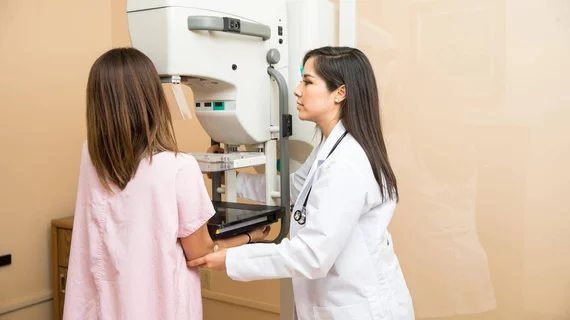Revised mammography recall letter makes big impact on patient care
Revising the text of a mammography recall lay letter so that it is easier to comprehend can lead to better overall patient care, according to a new study published in the Journal of the American College of Radiology.
“Because of changes in the perception of doctors’ authority, patient relationships have begun to shift, and many patients now choose to take a more active role in their care,” wrote Derek L. Nguyen, MD, Johns Hopkins Medicine in Baltimore, and colleagues. “This has increased the importance of comprehension of written patient communications.”
The authors noted that most organizations recommend text provided to patients be written at or below an eighth-grade reading level. Using the Flesch-Kincaid grade level readability measure, they determined that their own lay letter—“Your recent breast imaging examination showed a finding that requires additional imaging to complete the exam. After further evaluation, most such findings are benign (not cancer)”—was written at a 12th-grade reading level. The revised statement did have more words (34) than the original (26), but it had nine fewer characters, shorter sentences and shorter words.
A revised letter the team developed—“There is a spot on your mammogram that needs a closer look. We would like for you to come back for more pictures or an ultrasound. After looking closer, most spots are not cancer”—had a fourth-grade reading level.
Nguyen et al. then surveyed patients in late 2018, asking female patients over the age of 30 who were undergoing screening mammography to assess their comprehension of each statement. Nearly 600 patients from four different outpatient imaging centers completed the survey.
With the original lay letter, 49.6% of patients understood that they should return within one month to the imaging center. With the revised letter, however, that jumped all the way to 95.2%.
“Our patient survey demonstrates that at least half of women attending screening mammography misunderstand the recommendation for a prompt return for additional imaging in the setting of an abnormality on the screening examination,” the authors wrote. “Our study emphasizes the importance of readability and its direct effect on improving our patients’ health literacy. Therefore, the call to action is to revise any recall lay letter written higher than an eighth grade level to increase patient comprehension as well as to consider including a clear recommendation of an intended time frame to return for additional breast imaging studies.”

